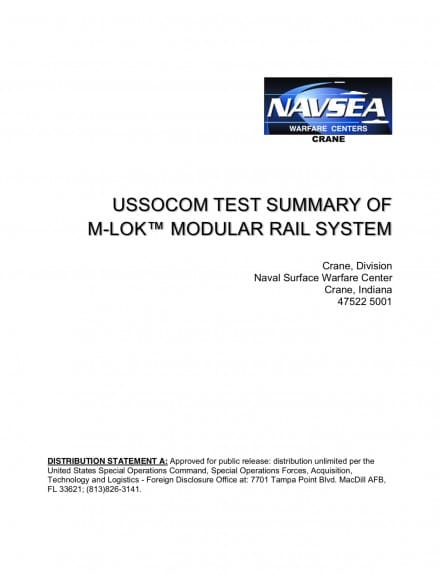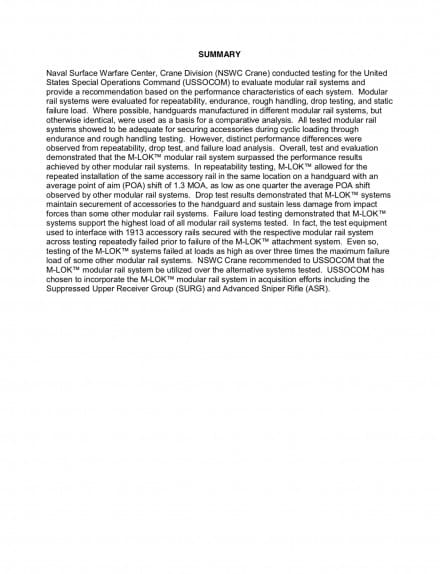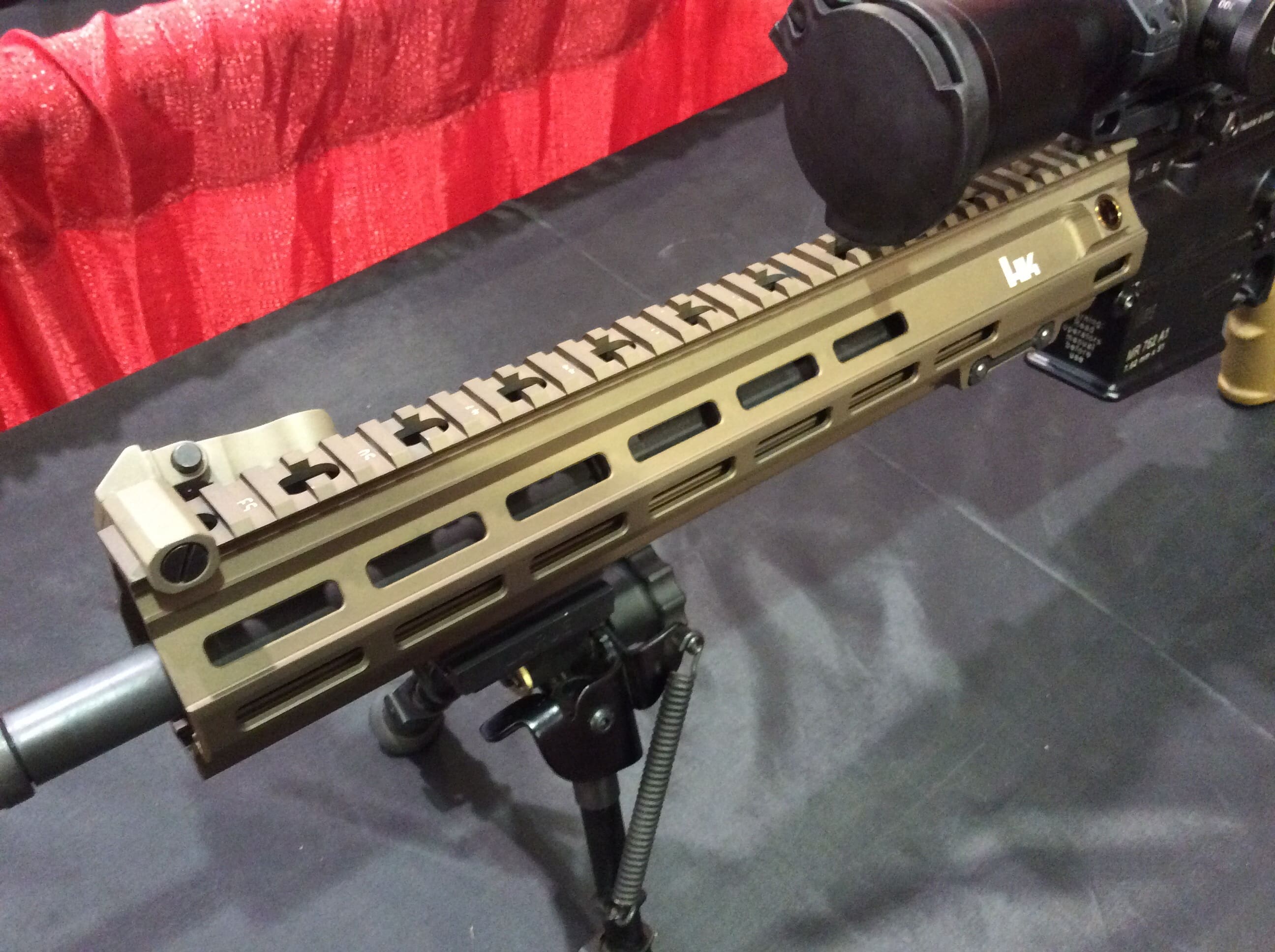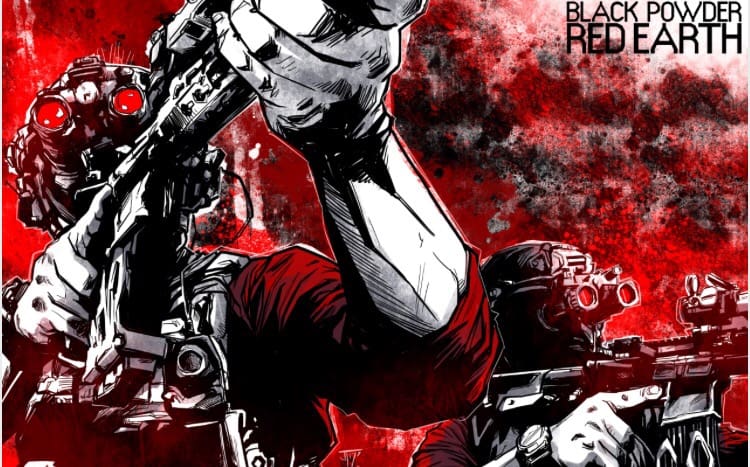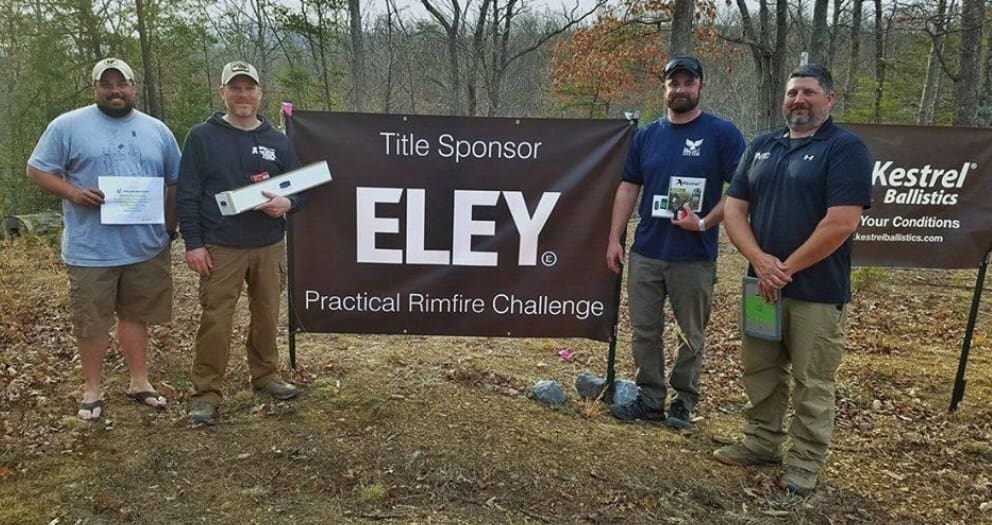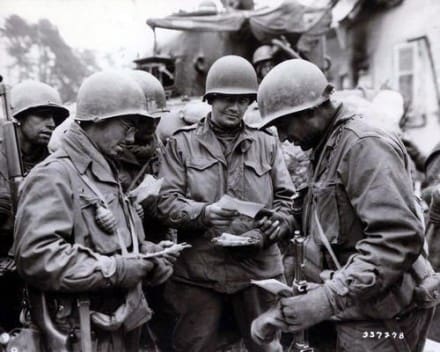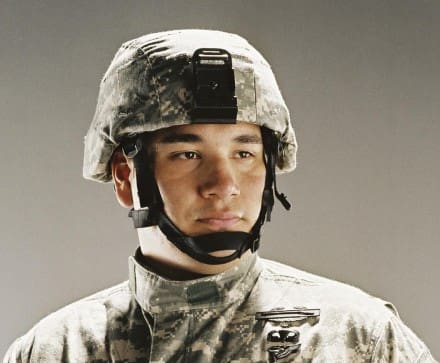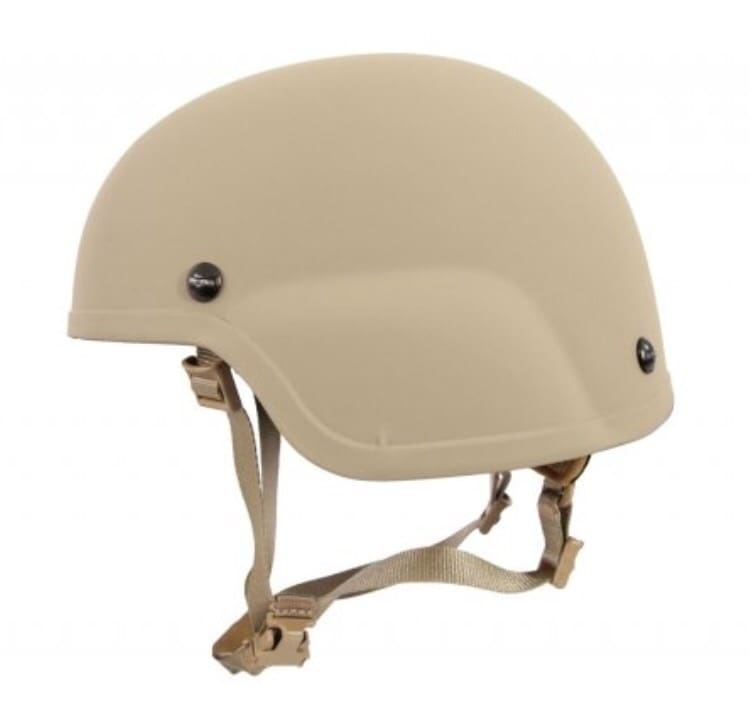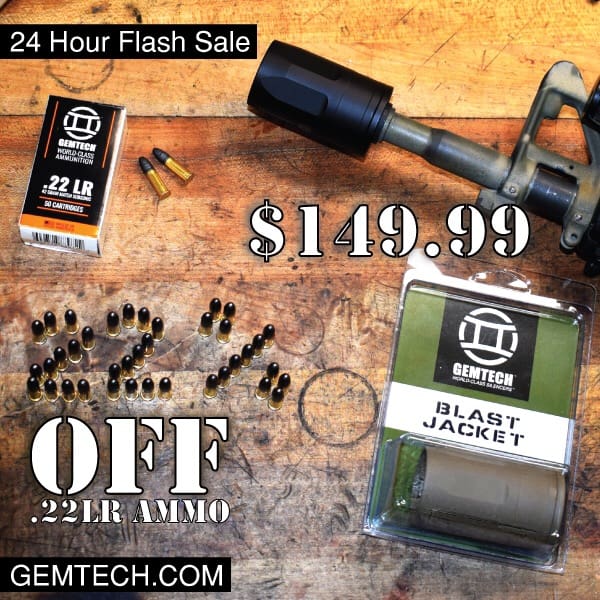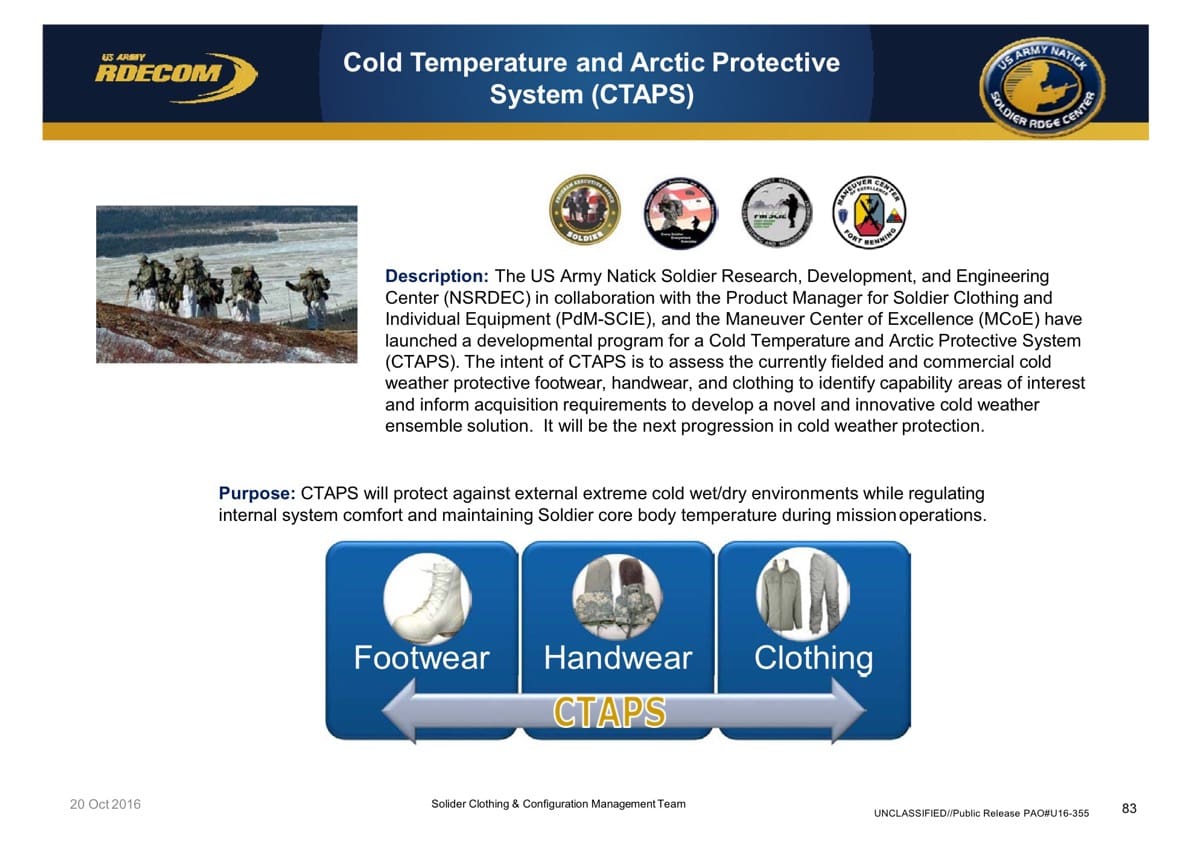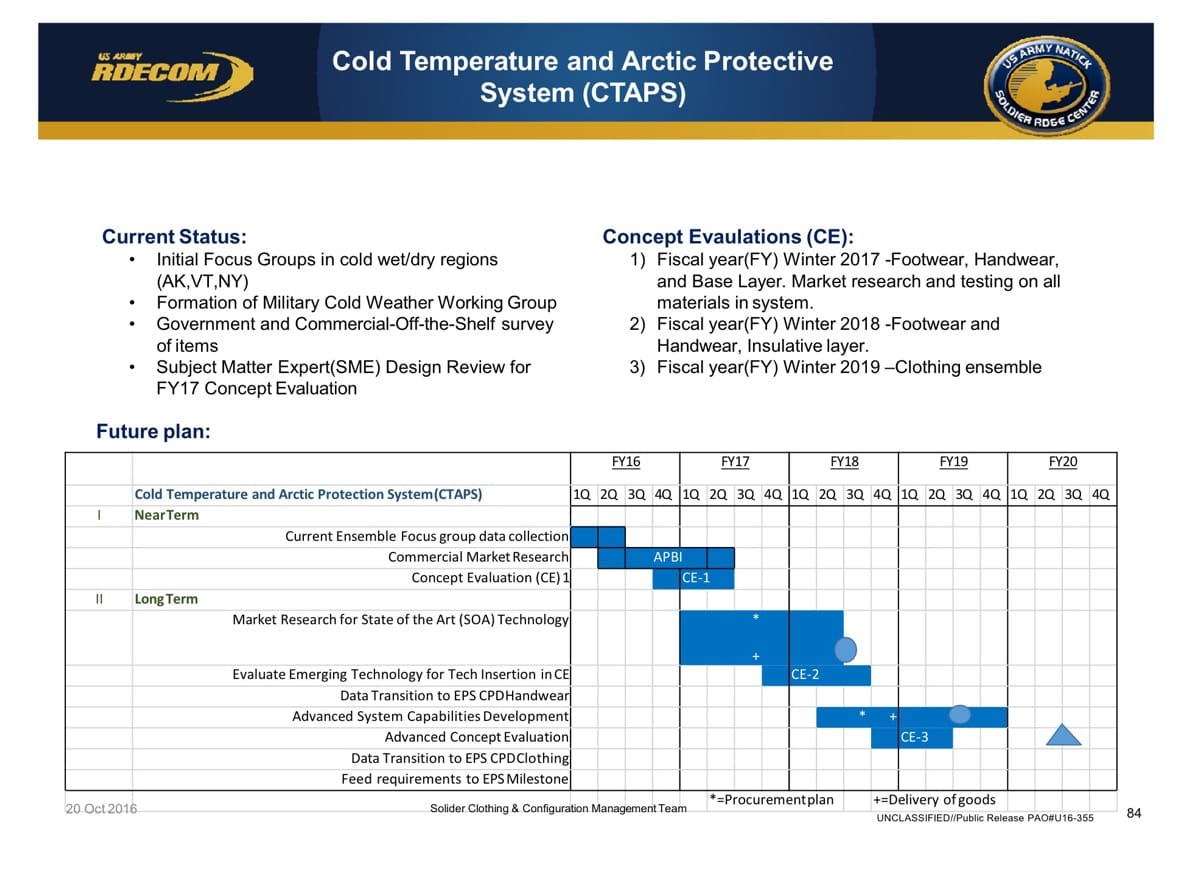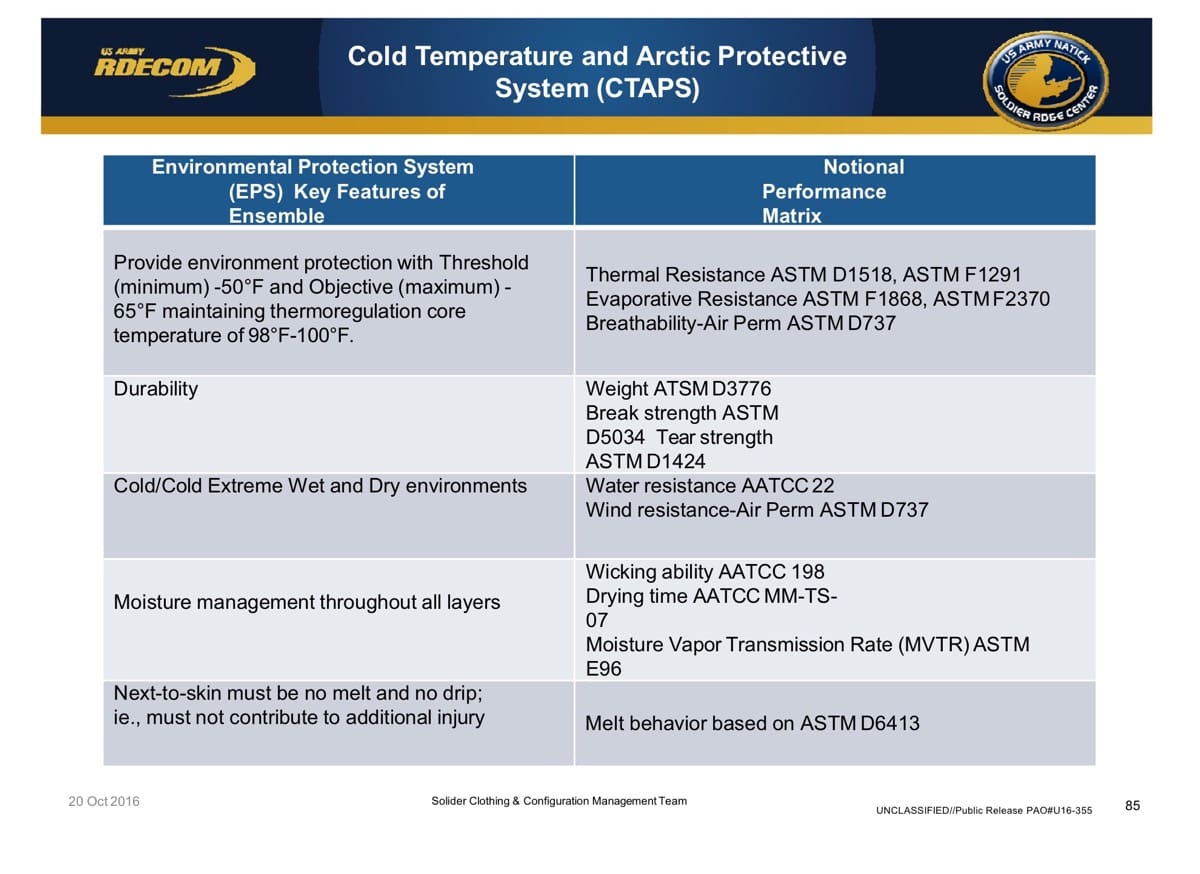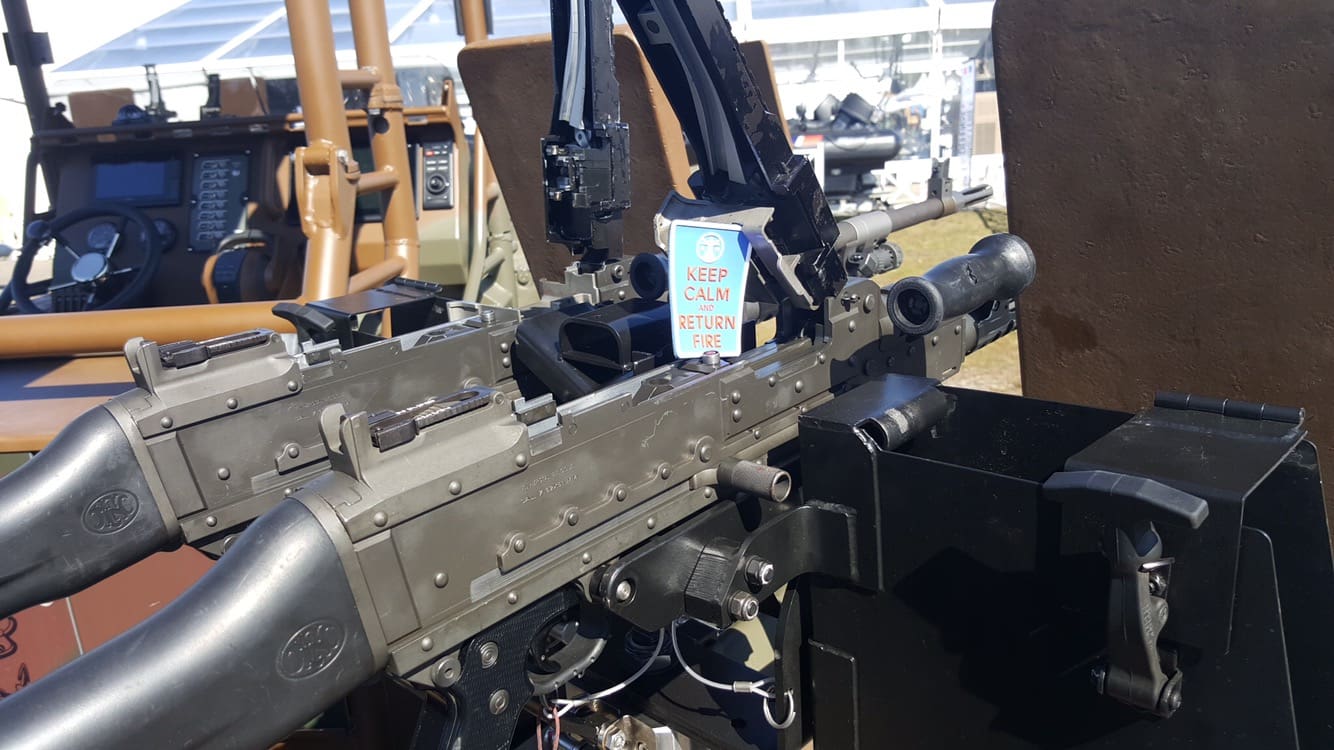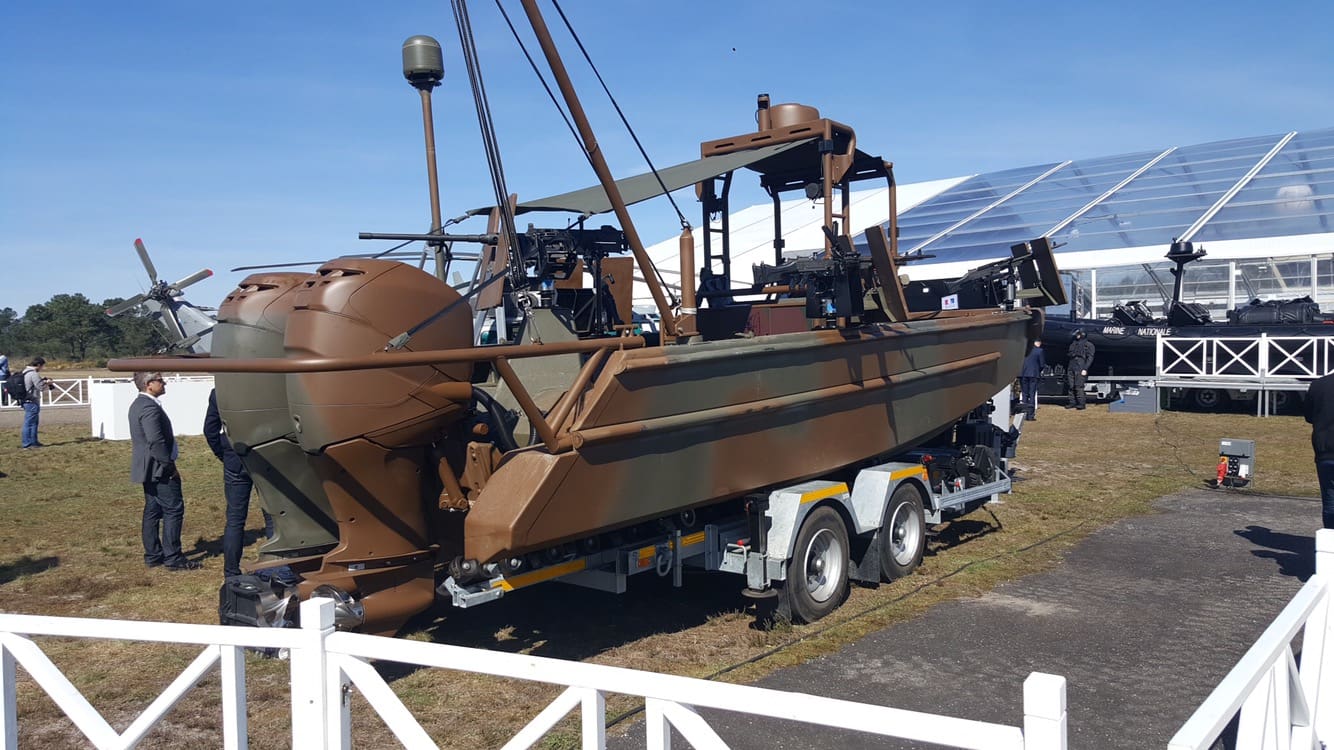While we’ve heard rumors of a USSOCOM directed study by NSWC-Crane of weapon accessory attachment systems, we only recently came into possession of evidence of that study, conducted in 2016. We present to you the summary of the report, as it offers the most pertinent facts. However, we are not offering up the rest of the report, as it contains proprietary information regarding the Magpul M-Lok attachment as well as other, competing systems.
The summary states:
SUMMARY
Naval Surface Warfare Center, Crane Division (NSWC Crane) conducted testing for the United States Special Operations Command (USSOCOM) to evaluate modular rail systems and provide a recommendation based on the performance characteristics of each system. Modular rail systems were evaluated for repeatability, endurance, rough handling, drop testing, and static failure load. Where possible, handguards manufactured in different modular rail systems, but otherwise identical, were used as a basis for a comparative analysis. All tested modular rail systems showed to be adequate for securing accessories during cyclic loading through endurance and rough handling testing. However, distinct performance differences were observed from repeatability, drop test, and failure load analysis. Overall, test and evaluation demonstrated that the M-LOKTM modular rail system surpassed the performance results achieved by other modular rail systems. In repeatability testing, M-LOKTM allowed for the repeated installation of the same accessory rail in the same location on a handguard with an average point of aim (POA) shift of 1.3 MOA, as low as one quarter the average POA shift observed by other modular rail systems. Drop test results demonstrated that M-LOKTM systems maintain securement of accessories to the handguard and sustain less damage from impact forces than some other modular rail systems. Failure load testing demonstrated that M-LOKTM systems support the highest load of all modular rail systems tested. In fact, the test equipment used to interface with 1913 accessory rails secured with the respective modular rail system across testing repeatedly failed prior to failure of the M-LOKTM attachment system. Even so, testing of the M-LOKTM systems failed at loads as high as over three times the maximum failure load of some other modular rail systems. NSWC Crane recommended to USSOCOM that the M-LOKTM modular rail system be utilized over the alternative systems tested. USSOCOM has chosen to incorporate the M-LOKTM modular rail system in acquisition efforts including the Suppressed Upper Receiver Group (SURG) and Advanced Sniper Rifle (ASR).
Of additional note, the US Army directed H&K to integrate an M-LOK rail (designed by Geissele) on the new Compact Semi-Automatic Sniper System rifle which is an indication of wider Dod adoption of M-Lok.


